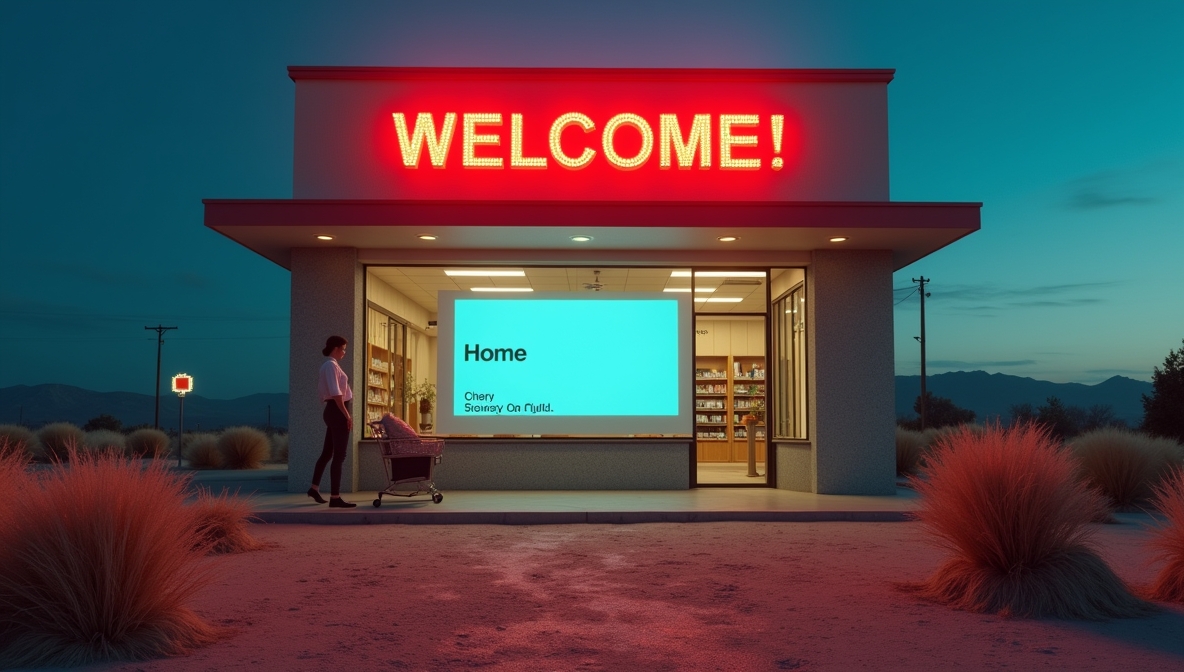‘You take care of the technical aspect of the website and I will focus on design and UX’.
This is something rather puzzling that I often hear with my clients. Why separate SEO and UX, when they are in fact part of the same user experience journey?
It is a common misconception to believe that user experience and website design should be dealt with separately from your SEO strategy. There is in fact no good UX without good SEO, and vice versa. You could make the most beautiful design in the world, if you do not take into account your search engine optimization in the process, no one will find your website. On the other hand, you could focus solely on your SEO and keyword optimisation, but if your website is not user-friendly, it will automatically drive visitors away.
A good or poor user experience will impact your overall SEO score.
When UX’s gone wrong
It’s the classic case of the button on your homepage banner.

One of my clients owns several domains and subdomains, but the main website is the one that attracts 90% of the visitors. In order to boost one of their campaigns, they decided to add a button on the main’s website homepage banner redirecting the users straight to their other website. It’s worth mentioning that the ‘external’ website opened in the same window, thus closing down the first one.
By doing so, they believed it would be the most effective way of getting visitors to interact with their campaign, and that this was the most user-friendly way of doing it.
Sure enough, it boosted the traffic to the secondary domain and brought more visibility to their campaign. One thing they did not consider, however, was the dire negative effects this would have on their main website.
Just because you own both domain names does not mean that search engines like Google consider them as a ‘bundle’: they are still separate websites and will only be seen as such. Redirecting their visitors to an external website as soon as they landed on their homepage had some serious consequences on their SEO performance.
Sending traffic away from their website led to:
- A high bounce rate and exit rate.
- Low time spent on their main page.
- No interaction with the rest of their website / no additional pages visited or action is taken.
- By confusing the user (they did not choose to visit the website they were sent to!), they were more likely to close down the new website immediately after opening, which also led to a high bounce rate on the additional website.

As a result, after a couple of weeks, the website lost in ranking on search engines, which in turn meant fewer visitors to the site, and fewer donations to the charity. What seemed like the best user-friendly thing to do turned out to be an SEO – and lead acquisition – disaster.
So how could they have overturned this? By considering UX and SEO as one single thing, of course.
SEO-friendly options that would have helped boost their additional domain without impacting the main one could have included:
- A time-delayed pop-up on the homepage.
- A button on the homepage banner that leads to a landing page on the same website before redirecting the users to a different one.
- Opening the external website in a new tab, without forcing them away (yes, that simple).
The client realised there was a problem with their traffic but wasn’t able to identify the problem until someone from our team at Contentopia got involved. We were able to fix the problem quickly, although it took a few weeks for the website to regain its original rankings.
Great SEO, poor UX: the case of the petition form
Let’s look at it from the other perspective: a good SEO strategy that did not include any UX considerations.
A client launched a new campaign with the ultimate goal of getting visitors to sign a petition. Because the campaign was so important for them, they spent a lot of time and resources working on their messaging, optimising the texts for SEO purposes, and creating fancy-looking ads for their social media. They had a solid campaign, but they forgot one of the most important things: how user-friendly their campaign page and petition form were going to be.

I am sure you can already sense the problem here: you have a high-ranking website, a campaign page getting lots of visitors every day, and you’re spending a lot of money on advertising to push this campaign, but your landing page and your form are just not working as they should.
For a starter, the form is not responsive and only works well on desktop. Unfortunately, the audience is predominantly mobile-based. Oops. On top of that, the button to send the petition does not always work and requires it to be clicked at least twice before the form is sent. As for the website’s top menu, the lack of responsiveness of the form means that the menu does not always show properly to the visitor, making it impossible to navigate the website.
By focusing on the campaign’s SEO and visibility without extensively testing the UX friendliness of the page, the client spent a lot of time, effort and money for very little end results.
Both of these clients learnt their lesson the hard way: UX and SEO go hand-in-hand. Each comes with its own specific skill set, but that doesn’t mean they shouldn’t be considered under one big single website strategy.
Stop separating your UX from your SEO strategy. Your visitors will thank you for it.






